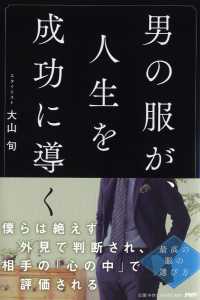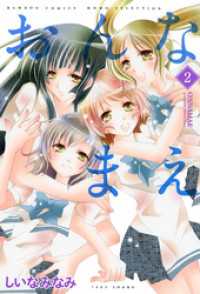Full Description
Science learning has not always kept pace with demands for improvement in reading and math test scores, but adaptable thinking and learning in science are essential competencies for learners who will need to keep up with accelerating demands in high school, college, and the workplace for technological knowledge and skills. Using the accessible and proven instructional strategies introduced in Differentiated Instructional Strategies: One Size Doesn't Fit All (Corwin, 2002), authors Gayle Gregory and Elizabeth Hammerman provide an expanded approach to creating science classrooms where learners thrive and succeed. Topics include: - Encouraging inquiry, trust, and relaxed alertness for learners- Creating hands-on performance tasks and rubrics applicable to real life settings- Using data to assess learner knowledge and achievement gaps against grade-level standards-Continuous assessment before, during, and after learning- Methods for engaging emerging learners, developing learners, and fluent learners at all stages of development- Ready-to-use strategies for inquiry-based learning, inexpensive hands-on learning, problem-based learning, cooperative learning, focus and sponge activities, graphic organizers, choice boards, and more- Management and pacing strategies for the differentiated science classroom.A generous collection of templates, planners, checklists, rubrics, and graphic organizers will be included in the text. Standards-based sample lessons will be offered for grades K-8.
Contents
AcknowledgmentsAbout the AuthorsIntroductionDifferentiated InstructionTeaching MattersClarifying Instructional GoalsDifferentiated Instruction in ActionPart I. Effective Science Education1. Creating a Climate for Differentiated InstructionA Climate for LearningA Safe and Enriched EnvironmentInternet Resources Related to Health and SafetyNatural Learning SystemsEmotional Learning SystemSocial Learning SystemPhysical Learning SystemCognitive Learning SystemReflective Learning SystemLearning Systems With Links to National StandardsA Planning Guide for Differentiated InstructionPhases of the Planning Guide2. Scientific and Technological Literacy for the Twenty-First CenturyScientific LiteracyScience Education StandardsUnifying Concepts and ProcessesProcess and Thinking Skills in K-8 ScienceDispositions That Underlie ScienceDimensions of LearningTechnological LiteracyViews of TechnologyIntegration of Information and Communication Technology (ICT)3. Knowing the LearnerMulticultural EducationMulticultural Education in ScienceGender EquityGender Equity in ScienceLearning ModalitiesLearning and Thinking StylesKolb's Learning StylesMcCarthy's 4MAT SystemGregorc's Thinking StylesGardner's Theory of Multiple IntelligencesEight Intelligences Linked to ScienceSternberg's View of IntelligenceLearning Activities Linked to IntelligencesStrategies for PreAssessmentAssessing Prior KnowledgeAddressing MisconceptionsPretest of ConceptsPretest of SkillsPart II. Designing Differentiated Instruction4. Methods and Effective Practices for Increasing Student AchievementMethods for Teaching and Learning ScienceThe Roles of Teachers and Student in MethodsResearch-Based Effective PracticesStrategies Linked to Brain Research and Classroom PracticesScience Notebooks as Tools for LearningLab ReportsGroupingCooperative LearningAdjustable AssignmentsCurriculum Compacting5. Strategies for Activating and EngagingStrategies for EngagementK-W-L ChartsDiscrepant EventsSchool Site InvestigationsInformal Learning EnvironmentsVideo ClipsGuest SpeakersDisplaysLiterature in ScienceCase Studies6. Strategies for Acquiring and ExploringInquiry DefinedTraditional Versus Inquiry-Based ClassroomsFactors That Support Inquiry and Differentiated Instruction in ScienceEnvironments That Support Inquiry-Based Teaching and LearningClassroom FeaturesEquipment and SuppliesManagement StrategiesProblem-Based LearningExamples of PBL TopicsProjectsModelsBooklets, Posters, and BrochuresProjects at the Primary, Intermediate, and Middle Grade LevelsScience Fair ProjectsProduct Testing and Survey ResearchScience and Technological DesignPresentationsStationsExamples of Stations at the Primary Grade LevelExample of Stations at the Intermediate Grade LevelExample of Stations at the Middle Grade LevelCentersStructured CentersExploratory CentersRelearning CentersAssessment for Stations and CentersChoice BoardsChoice Boards for a Primary Level Study of AnimalsContractsContract for Rocks and MineralsChoice Board for ActivitiesComputer-Based Technologies as Tools for Learning7. Strategies for Explaining, Applying, and Creating MeaningGroup DiscussionQuestions for Thinking and Problem SolvingDiscussion StartersNonlinguistic Representations for K-8 ScienceChartsData Tables and GraphsCreating GraphsBar GraphsLine GraphsCircle GraphsSix Types of Graphic OrganizersFour-Corner Organizer8. Strategies for Elaborating and Extending LearningBeyond the BasicsGames That Enhance LearningCubingCubing With Questions About the MoonJigsawAnalogies and SimilesAnalogiesSimilesSimiles for a Middle Grade Unit on Cells9. Strategies for Assessing and Evaluating LearningAssessment and EvaluationAssessment Strategies in the Science ClassroomPerformance Tasks for Learning and AssessmentCreating Rubrics for Teacher Assessment and Self-AssessmentHolistic RubricsGeneralized RubricsAnalytic RubricsPlanning Differentiated Instruction: The Key to SuccessConsiderations, Resources, and Strategies for Differentiating Instruction in ScienceReferencesIndex








